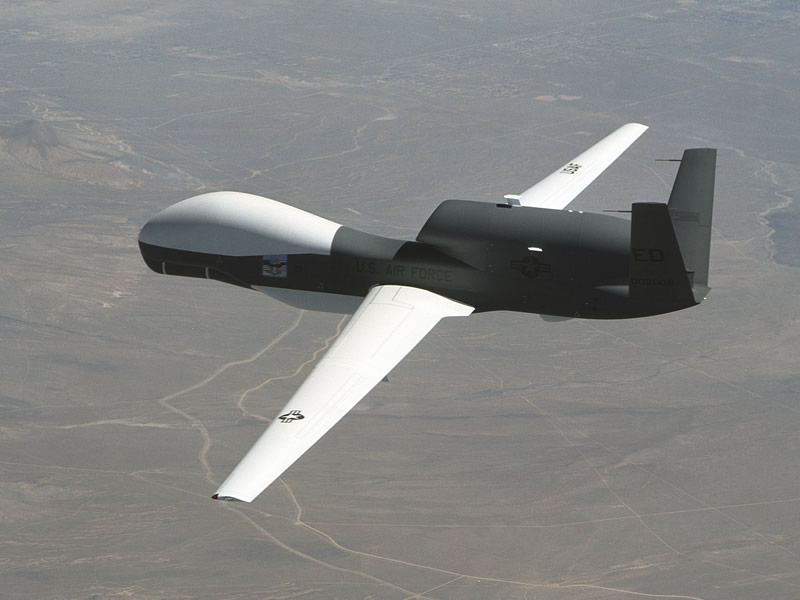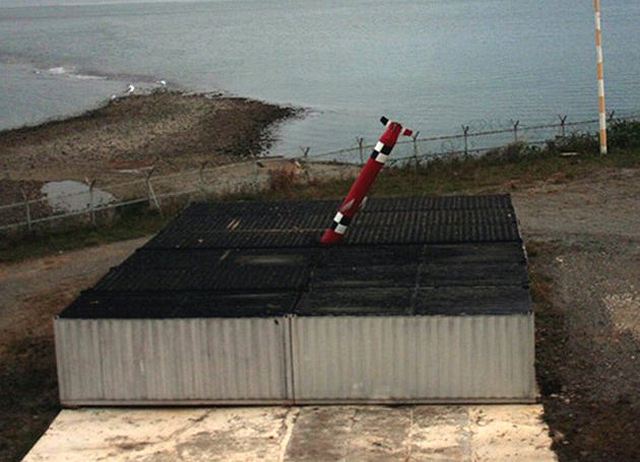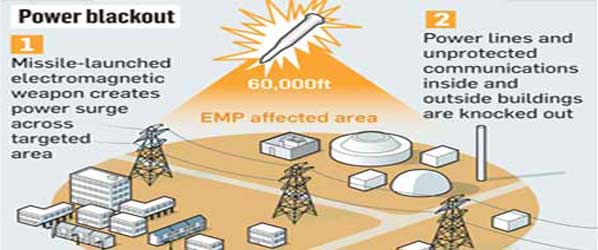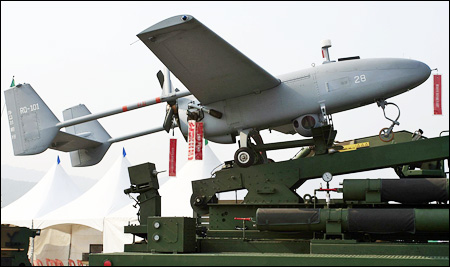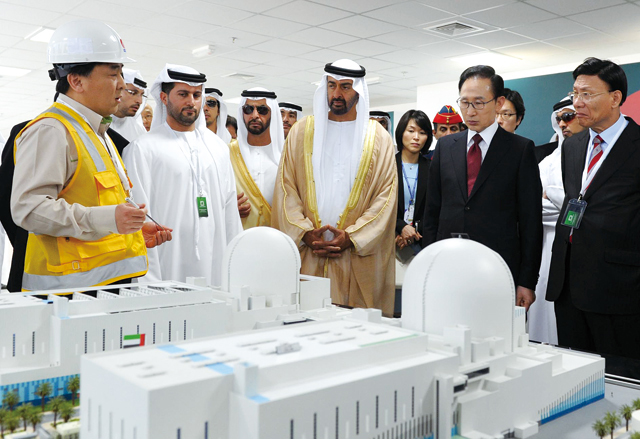South Korea to Transfer UAV, Missile Technologies to UAE
Korea promised to transfer technology for its unmanned aerial vehicle (UAV) to the United Arab Emirates (UAE), following its successful bid to build four nuclear reactors in the Middle East nation, a government source said Thursday. Defense Minister Kim Tae-young made the commitment during his visit to the UAE in November to discuss bilateral defense issues as well as to support the landmark $20 billion deal, the source told The Korea Times.
وقال مصدر حكومي يوم الخميس وعدت كوريا لنقل التكنولوجيا لمركباتها الجوية بدون طيار (UAV) لدولة الإمارات العربية المتحدة (الإمارات العربية المتحدة)، بعد محاولة ناجحة لبناء أربعة مفاعلات نووية في دولة شرق أوسطية. وأوضح وزير الدفاع كيم تاي يونج التزام خلال زيارته لدولة الإمارات العربية المتحدة في نوفمبر تشرين الثاني لمناقشة القضايا الدفاعية الثنائية فضلا عن دعم المعلم صفقة 20 مليار دولار، وقال المصدر لصحيفة كوريا تايمز.
Kim also offered to provide key arms technologies related to the homegrown Hyunmoo ballistic and cruise missiles to the UAE as part of efforts to expand defense cooperation between the two countries, he said on condition of anonymity.Technology on an electromagnetic pulse bomb (EMP) is among the key items for cooperation promised by Korea, said the source.
وقال كيم انه قدم أيضا تكنولوجيات الأسلحة الرئيسية المتصلة محلية Hyunmoo الباليستية وصواريخ كروز إلى دولة الإمارات العربية المتحدة كجزء من الجهود الرامية إلى توسيع التعاون الدفاعي بين البلدين بشرط عدم الكشف عن هويته.وتكنولوجيا قنبلة النبض الكهرومغناطيسي (EMP) من بين العناصر الرئيسية للتعاون وعدت بها كوريا المصدر.
The state-funded Agency for Defense Development (ADD) has been pushing to develop the bomb capable of neutralizing an enemy's command-and-control, communications and defense radar systems.EMPs can severely disrupt electronic equipment, which is susceptible to damage by transient power surges. An EMP attack is generated by a very short, intense energy pulse or high-altitude nuclear blast.
الوكالة التي تمولها الدولة لتنمية الدفاع (ADD) تم دفع لتطوير قنبلة قادرة على إبطال مفعول القيادة والسيطرة، وتعطيل الاتصالات وتعطيل الرادارات وبامكان ال EMPs تعطيل المعدات الإلكترونية، والتي هي عرضة للتلف من قبل عبر قوت العاصفة. يتم إنشاء هجوم EMP والتي يتم تشغيلها عن طريق مكثفات نبض الطاقة أو انفجار نووي على ارتفاع عال.
The agency plans to complete the development by 2014. "The UAE asked Korea to provide such key arms technologies as part of the package deal for the reactor contract," the source said. "Korea's positive response to the request played an important role in sealing the deal."
وتخطط الوكالة لاستكمال التنمية بحلول عام 2014. "، وسأل الإمارات العربية المتحدة كوريا لتوفير مثل هذه التكنولوجيات الرئيسية الأسلحة كجزء من صفقة للحصول على العقد مفاعل" قال المصدر. "لعبت استجابة كوريا إيجابية لطلب دورا هاما في ابرام الاتفاق."
Speculation has been growing after the agreement that there could have been some behind-the-scene promises to satisfy the UAE needs. At that time, Seoul's defense ministry declined to elaborate, only saying the two sides exchanged views on ways to expand bilateral defense cooperation programs. As for the UAV, Korea will offer the technology on the Night Intruder-300, also known as RQ-101, built by Korea Aerospace Industries (KAI), according to the source.
وتزايدت التكهنات بعد الاتفاق الذي كان يمكن أن يكون هناك بعض من وراء المشهد وعود لتلبية احتياجات دولة الإمارات العربية المتحدة. في ذلك الوقت، رفضت وزارة الدفاع في سيول أن تصفح عن اي شيء، واكتفت بالقول ان الجانبين تبادلا وجهات النظر حول سبل توسيع برامج التعاون الدفاعي بين البلدين. أما بالنسبة لطائرات بدون طيار، سوف تقوم كوريا بتقديم هذه التكنولوجيا night Intruder-300، المعروفه أيضا باسم RQ-101، التي بنتها صناعات الفضاء الجوي الكورية (KAI)، وفقا للمصدر.
KAI built the RQ-101 corps-level battlefield-reconnaissance UAV between 2001 and 2004. The Korean Army bought five sets of RQ-101s, with each set including six aircraft, a launcher and a ground-control station. KAI is also discussing the sale of the RQ-101 to Libya.The RQ-101 has a service ceiling of 4.5 kilometers and a cruise speed of 120 to 150 kilometers per hour. The 215-kilogram aircraft has a service radius of 200 kilometers and can operate for up to six hours in the air.
KAI بنت RQ-101 على مستوى ساحة المعركة- طائرة استطلاع بدون طيار بين عامي 2001 و 2004. الجيش الكوري اشترى خمس مجموعات من RQ-101S، مع كل مجموعة ست طائرات، قاذفة ومحطة التحكم الأرضية. KAI يناقش أيضا بيع RQ-101 .The RQ-101 إلى ليبيا الحد الأقصى اارتفاع يصل إلى 4.5 كيلو متر وبسرعة تطواف من 120-150 كيلومترا في الساعة. الطائرة تزن 215 كيلوغراما لديها دائرة نصف قطرها 200 كيلومتر من الخدمة ويمكن أن تعمل لمدة تصل إلى ست ساعات في الهواء.
The UAV is capable of multipurpose operations to perform missions like wide area surveillance, reconnaissance, target acquisition, bombing guidance, battlefield supervision and checking target break-down. It is also possible to transfer real-time images, especially in unfavorable environments during day and night.
الطائرات بدون طيار قادرة على عمليات متعددة الأغراض لأداء مهام مثل مراقبة منطقة واسعة، والاستطلاع، واقتناء الهدف، والتوجيه القصف، والإشراف على ساحة المعركة و فحص تحطم الهدف. ومن الممكن أيضا لنقل الصور في مباشرة، وخاصة في البيئات غير المواتية خلال النهار والليل.
Some observers say, however, potential exports of the RQ-101 to either the UAE or Libya could cause a political or diplomatic row between South Korea and Israel given the ground-control station for the UAV was developed with technical assistance from Israel Aerospace Industries (IAI).
ويقول بعض المراقبين، ومع ذلك، يمكن أن الصادرات المحتملة للRQ-101 إلى إما الإمارات أو ليبيا يتسبب في خلاف سياسي أو الدبلوماسية بين كوريا الجنوبية وإسرائيل بالنظر إلى محطة التحكم الأرضية لطائرة بدون طيار تم تطويرها بمساعدة تقنية من صناعات الفضاء الاسرائيلية (IAI).
IAI offered the technology when it sold its Searcher II UAVs to South Korea.Referred missile technologies are related to those for the 300-kilometer-range Hyunmoo-II ballistic missile and the 1,000-kilometer-range Hyunmoo-III surface-to-surface cruise missile developed by the ADD and LIG Nex1.
عرضت وكالة الفضاء الاسرائيلية التكنولوجيا عندما باعت طائرات الباحث II الطائرات بدون طيار الباحث إلى كوريا الجنوبية ترتبط تكنولوجيا الصواريخ لتلك ل300 كيلومترا الصواريخ البالستية Hyunmoo-II و1،000 كيلومتر المدى Hyunmoo-III كروز سطح إلى سطح الصواريخ التي وضعتها ADD وLIG Nex1.
The Hyunmoo-III missiles have been operational with the Army since last year. The Hyunmoo-III can hit targets with a margin of error of plus or minus five meters aided by a Terrain Contour Matching (TERCOM) system.
وكانت صواريخ Hyunmoo-III التشغيلية مع الجيش منذ العام الماضي. وHyunmoo-III يمكن ضرب أهداف مع هامش خطأ من زائد أو ناقص خمسة امتار بمساعدة من كفاف التضاريس مطابقة (TERCOM) النظام.
South Korea to Transfer UAV, Missile Technologies to UAE ~ ASIAN DEFENCE

